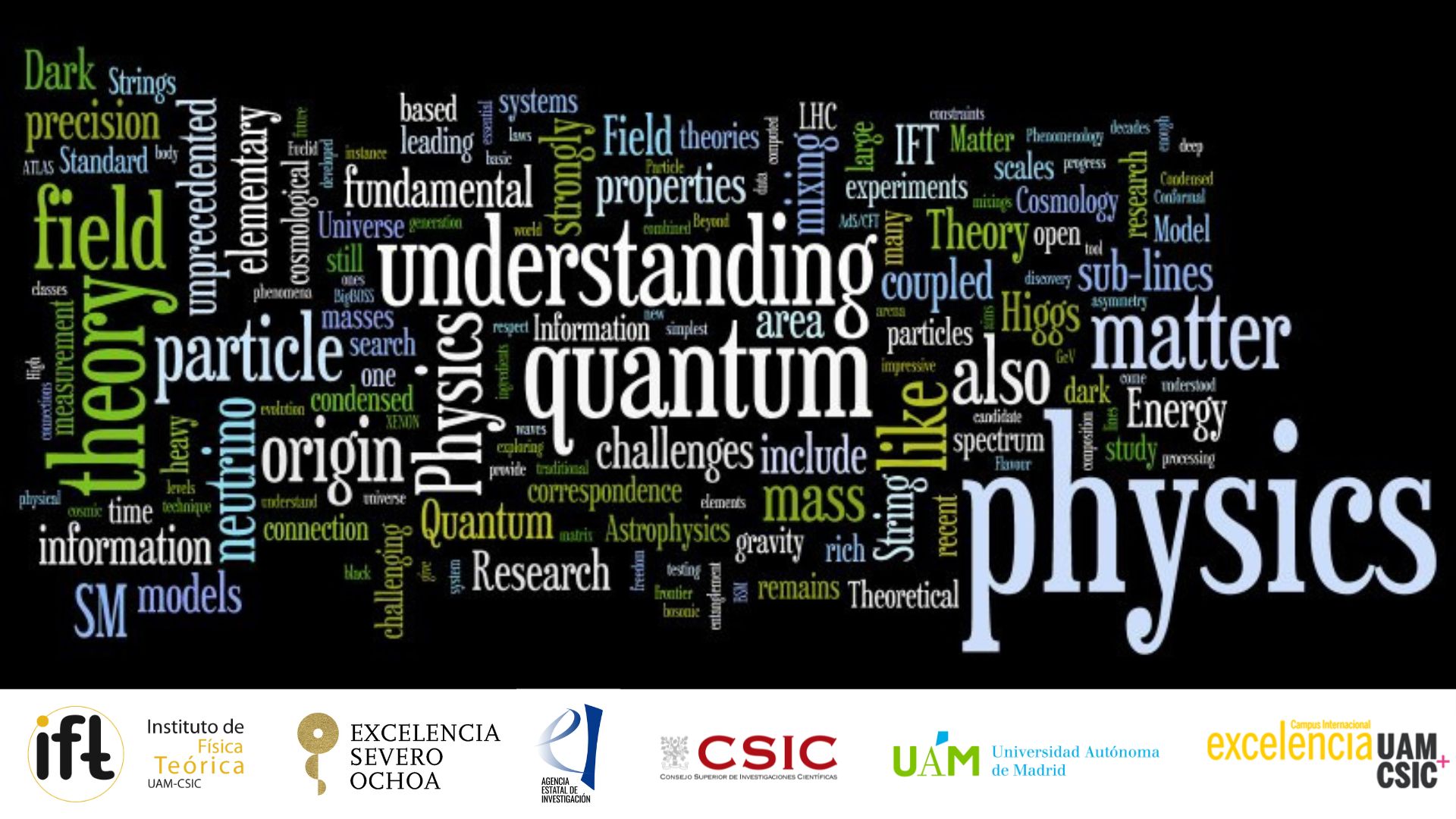Centro de Excelencia Severo Ochoa
Menú
Buscar

Online
The low-energy limit of superstring theories admits a description in terms of an effective field theory for its massless modes. The corresponding action is given by a double perturbative expansion in $g_{s}$, the string coupling, and in $\alpha'$, the square of the string length. The leading term of this expansion is given by one of the different ten-dimensional supergravity theories, whereas subleading terms involve terms of higher order in derivatives. The work presented in this thesis is the result of a research program that starts with the study of supersymmetric solutions of gauged supergravity and reaches the summit with the understanding of the effects produced by the $\alpha'$ corrections to solutions of the heterotic superstring effective action.
This thesis is divided in two parts. The first one focuses on the supersymmetric solutions of a minimal extension of the STU model of N=1, d=5 supergravity whose main interest lies on the fact that it can be obtained as a toroidal compactification of ten-dimensional N=1 supergravity coupled to a triplet of SU(2) gauge fields. Concretely, we construct and study solutions describing black holes and smooth horizonless geometries with non-trivial Yang-Mills fields.
The understanding of this type of solutions from the framework of string theory serves as a motivation for the work of the second part of the thesis, which is devoted to the study of solutions of the effective action of the heterotic string at first order in $alpha'$. The latter does not simply coincide with the action of N=1, d=10 supergravity coupled to a Yang-Mills vector multiplet as the Green-Schwarz anomaly cancellation mechanism and supersymmetry enforce us to introduce additional terms in the action. These terms are constructed out of the spin connection with torsion given by the field strength associated to the Kalb-Ramond 2-form and their contributions to the equations of motion are analogous to those of the Yang-Mills fields. This fact is exploited to construct analytic supersymmetric black-hole solutions with $\alpha'$ corrections.
The most important lesson to extract from our results is that the mass and the conserved charges of the black holes do get modified by the $\alpha'$ corrections. This is what one would expect on physical grounds as the corrections act in the string equations of motion as effective sources of energy, momentum and charge. This information is crucial to establish a correspondence between the parameters that characterize the effective or coarse-grained description (the black hole) and those that characterize the microscopic system of string theory that it describes. The effects on the charges introduced by the higher-derivative corrections has a major impact in the understanding of the so-called small black holes, which are an effective description of a fundamental string with winding and momentum charges. Small black holes are singular solutions with vanishing horizon area in the supergravity approximation. It has long been believed that higher-derivative corrections would be able to stretch the horizon, making the solution regular. Our results reveal that this is not the case at first order in $\alpha'$, and that previous regularizations of heterotic small black holes actually describe a different microscopic system which is already regular in the supergravity approximation.
The last chapter of the thesis contains the computation of the most general correction to the four-dimensional Kerr solution when the Einstein-Hilbert term is supplemented with higher-curvature terms up to cubic order, including the possibility of having dynamical couplings. This general set-up includes, as a particular case, the corrections predicted by the heterotic superstring effective action.
Social media